THE DEATH OF SLOW NEWS
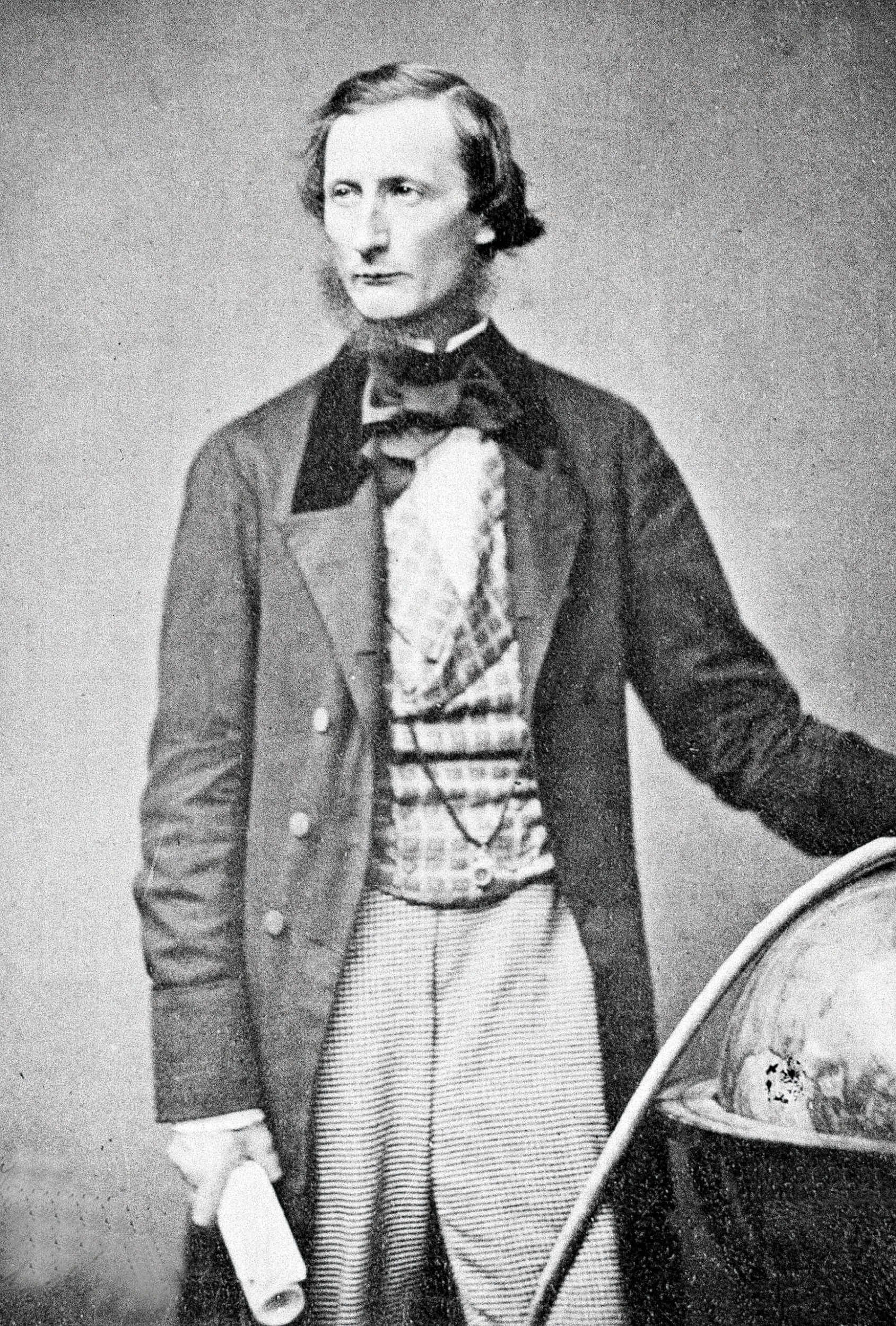
Cyrus West Field, financier and pioneer of the trans-Atlantic telegraph cable, is seen in 1862. (AP Photo)
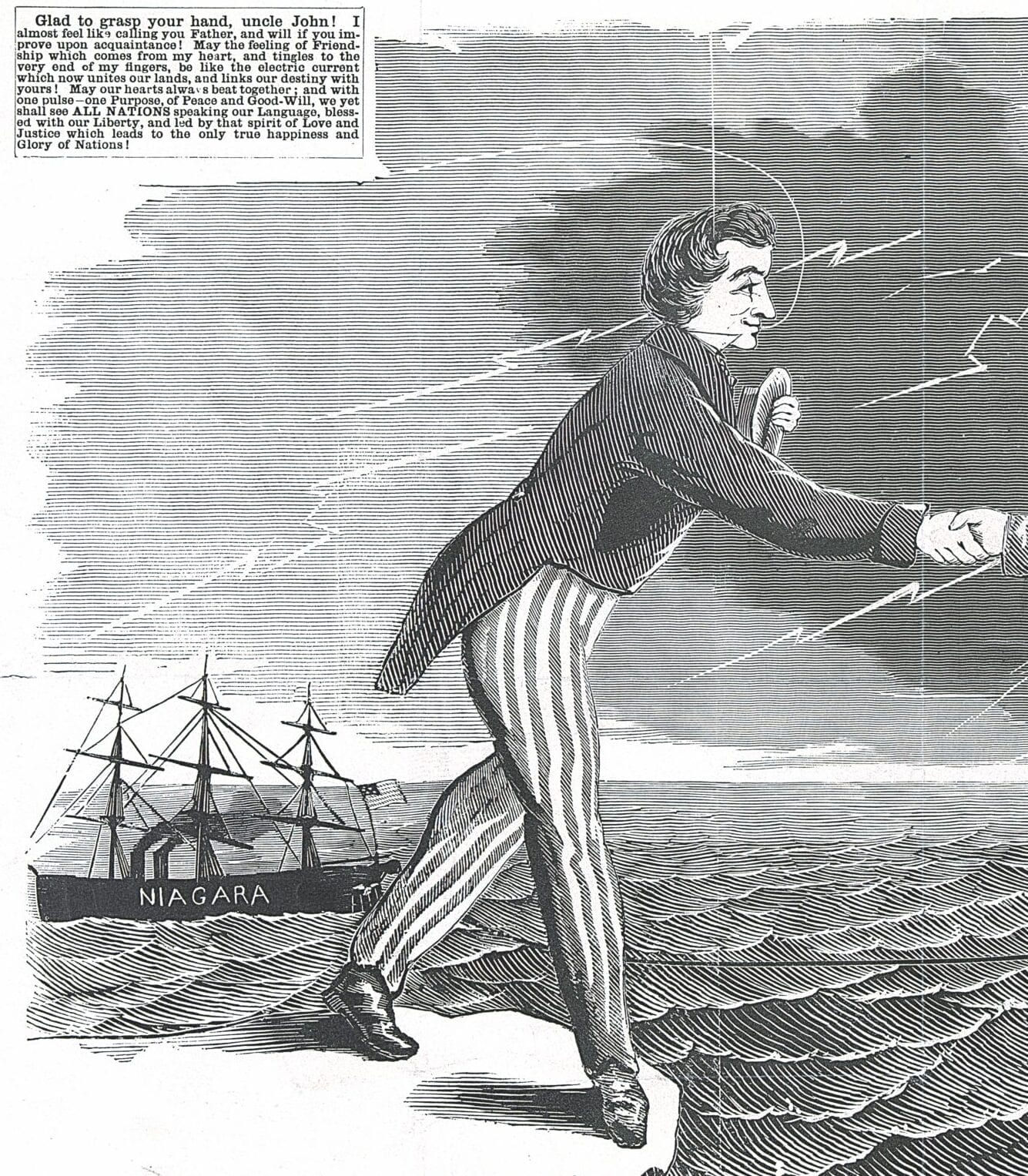
News of King George II’s death in 1760 took six wave-tossed weeks to reach his subjects in colonial America, demonstrating the desperately frustrating slowness of conveying information across the waters. Transmissions were not much faster a century later, during the Civil War, by which time the electric telegraph had been invented, easing the passage of communication across landmasses, where lines could be strung from poles. Getting the news across the sea required all manner of inventiveness: the London newspapers arranged for bulletins from North America to be sent to the outer capes of Newfoundland, for handwritten copies then to be rowed out to waiting eastbound steamboats and then hurried to the equivalent outer capes of northern Ireland, from where whaleboats would row them to the closest telegraph office for onward dispatch to London. This cumbersome process was not a huge improvement: it meant only that an item about Antietam or Gettysburg or Sherman’s march through Georgia could be read in Whitehall or the clubs of Pall Mall two weeks after it occurred.
Marginal speed increases were always noted: details of the 4th July 1864 battles in Virginia were published in The Times just a fortnight later, on July 16. And when President Lincoln was shot dead in April 1865, the telegraphed news, also transcribed as a handwritten letter and placed in a sealed leather packet, went by way of the steamship the Nova Scotian, and was carried to the post office when the ship hove to off Donegal, from where it went off to be printed and the news distributed to a shocked and dismayed London – 12 days after the shooting.
“A mighty power for the good of the world”
Clearly a new and faster means of communication was needed, and the newly-discovered telegraph would be the key. And the key place in the formulations that followed was a barely explored, windswept island distinguished only for being the fourth-largest in the Atlantic, after Greenland, Iceland and Ireland – the British crown colony of Newfoundland. In the middle of the century, a small group of entrepreneurs wondering how to speed up transatlantic messaging began focusing on this island – and it did so because Newfoundland offered the closest points in North America to Europe: it was a mere 1,600 miles from the harbour opening at St John’s to the cliffs of Connemara.
An undersea cable – for such had already been invented in Europe: a telegraph cable had been laid between Britain and France in August 1850, and soon afterwards others were lowered into the seas between Britain and Holland, and between Scotland and Ireland – could perhaps be laid across the Cabot Strait, at the mouth of the
St Lawrence. If then an array of landlines could connect this underwater cable to the cities of St John’s and Halifax, and another line be laid to connect with Boston – then it would need only a fleet of fast steamships to sail on a regular schedule between Newfoundland and Ireland, and messages could get from New York to London in as little as seven days.
“An item about Sherman’s march through Georgia could be read in the clubs of Pall Mall two weeks after it occurred”
It was at this point that the 35-year-old Cyrus West Field, a wealthy scion of a paper-making family in the Berkshire Hills of Western Massachusetts, stepped into this saga. The main backer of the Newfoundland plan had come to see him, in the hope of persuading him to invest. Field received the man courteously enough, said he’d think about it – and then, reading in his library that same evening, happened to turn a globe with his hands. It was a moderately large globe, appropriate to a gentleman’s library – and Field noticed that he was able to span his hand both between Newfoundland and Ireland and between London and New York.
And then in an instant he realised that rather than building a cable through the wildernesses of Newfoundland and Nova Scotia in the hope of saving a couple of days’ transmission time for the telegraph, one could build a cable directly from Newfoundland to Ireland, under the narrowest point of the entire Atlantic Ocean. If he was able to do that, it would reduce the time for a message to pass between the two greatest cities in the nineteenth-century world from a matter of days to just a few seconds.
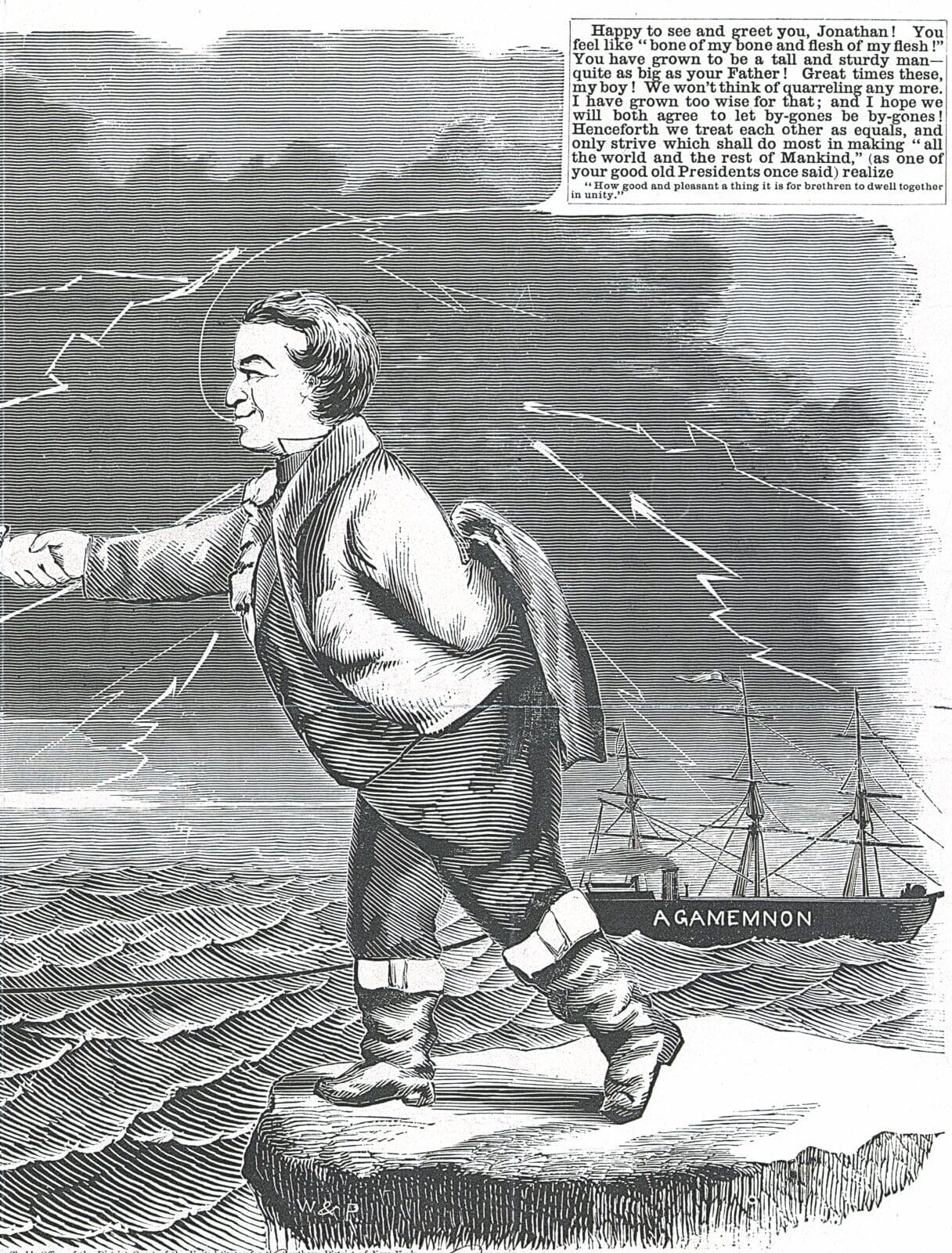
Field was neither technically minded nor an expert on the topography of the sea – but he immediately wrote to two men who were: Samuel Morse, who had invented the telegraphic code; and Matthew Fontaine Maury of the US Navy, whose surveys of the Atlantic had established the existence of a vast mid-ocean plateau, the Mid-Atlantic Ridge. Both told Field that his idea could be made to happen: Morse had already experimented ten years previously, with cables running under New York harbour, and had written to the US government to the effect that “a telegraphic communication on the electro-magnetic plan may with certainty be established across the Atlantic”; Maury, though blissfully unaware that the Mid-Atlantic Ridge was a range of peaks and canyons as sharp and vertiginous as the Rockies (over which one would hardly plan blindly to drop a telegraph cable from the air, say), had written that the “plateau seems to have been placed there especially for the purpose of holding the wires of submarine telegraph, and of keeping them out of harm’s way”. The New York, Newfoundland and London Telegraph Company was accordingly established in May 1854; two years later the Atlantic Telegraph Company was similarly established in London. Both were committed to raising funds for the project. The American firm’s chairman was Peter Cooper – founder of Cooper Union college in New York – a man who believed that what he was about to do would “offer the possibility of a mighty power for the good of the world”.
The British government was especially excited by the plan and offered to survey the route, perhaps even to provide ships to help lay the cable, and to pay a fee – providing its official messages could be guaranteed priority over all others. The Americans debated the same matter very much more intensely.
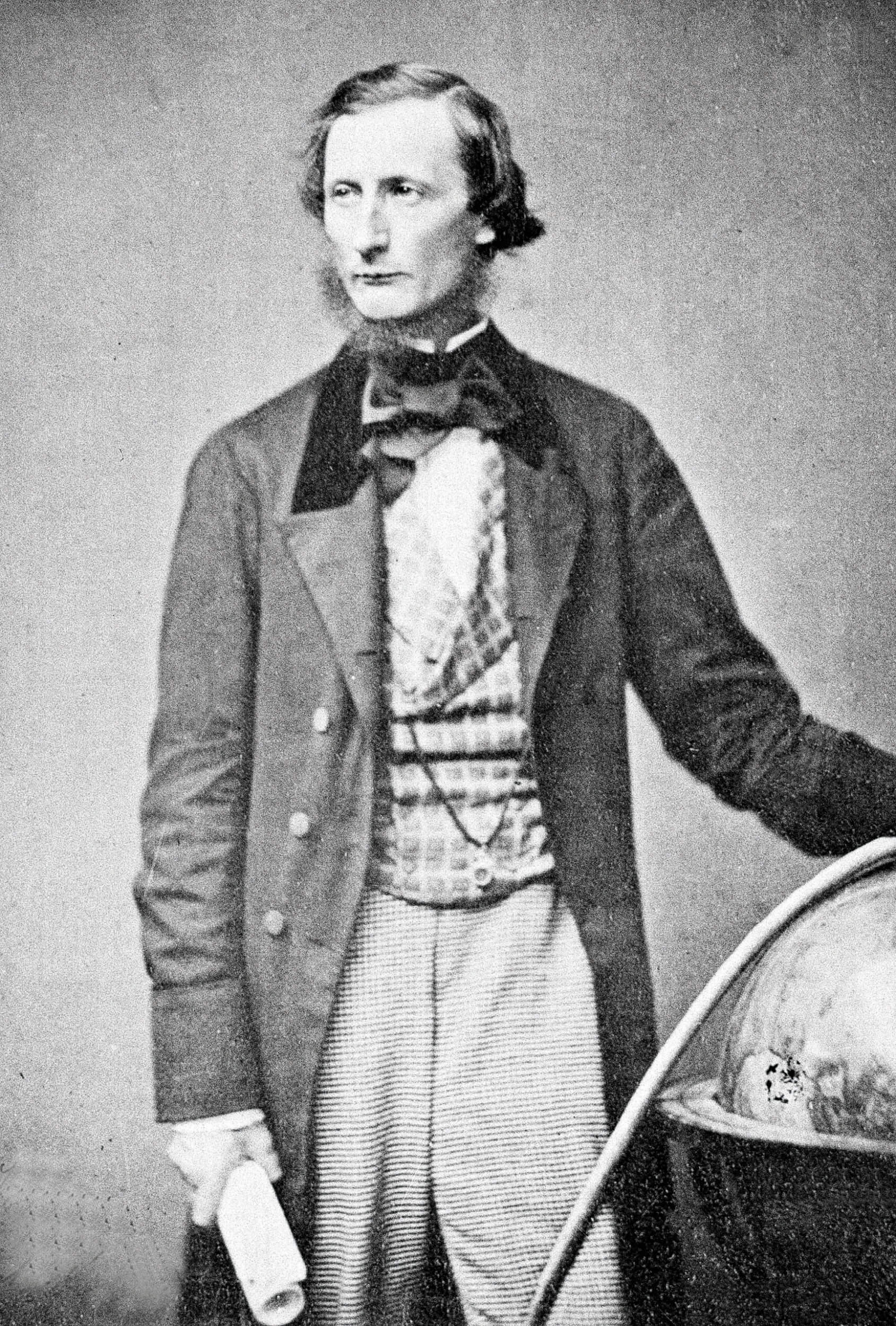
“Princess Adelaide has the whooping cough”
Not everyone in the New World wanted such intimate contact with the Old. Thoreau, ever the grumpy misanthrope, remarked caustically that tunnelling beneath the Atlantic, as he put it, to place a communications cable would hardly be a worthy exercise if the first news to reach America was merely “that Princess Adelaide has the whooping cough”. And there was still a distinct mood of post-revolutionary, post-White-House-burning Anglophobia abroad, especially in the South, where anything English was widely loathed and despised. Nonetheless, after much hard lobbying in Congress, the requisite bills passed, and on the March day in 1857 before he handed over his office to James Buchanan, President Franklin Pierce signed into law an Act offering precisely the same terms as had been agreed in London.
Construction – the most ambitious construction project then ever envisaged in the world – could now go ahead.
“The Atlantic is dried up”
Publicity was enormous: the papers on both sides of the ocean were filled with suggestions of how such a cable might be built – suspend it from balloons, wrote one correspondent; have it dangle just below the surface of the sea from a chain of buoys, where ships could tie up and, just like today’s cars at a roadside service station, fill up with messages; Queen Victoria’s consort, Prince Albert, thought it should be cased in a glass tube; still others thought that there were layers of differing density in the sea that would affect how deeply various objects might sink: horses would sink lower than frogs, fat people would lie below thin and cables would sink to only a certain depth and then hover in the ocean, like an aqueous version of today’s vapour trails
from a jet.
Scientists squabbled endlessly over how thick the cable should be – thick copper conducts the greater voltages needed for long-distance messaging, but thick copper also meant a heavy cable that might break under its own weight as it was lowered to the seabed. In the end it was decided to manufacture a cable about as thick as a man’s index finger, its copper core insulated with gutta percha, then with hemp and tar, finally with steel wire armouring wrapped around it, and weighing about a ton a mile (though only around 1,340 pounds when suspended in water). In the early summer of 1857, two and a half thousand miles of this cable – 340,000 miles in total length, if all its component wires were measured – were brought from the factories in London and Liverpool and coiled carefully into drums aboard two sailing vessels, the USS Niagara and the HMS Agamemnon, with half of the cable in each: about 1,500 tons’ worth.
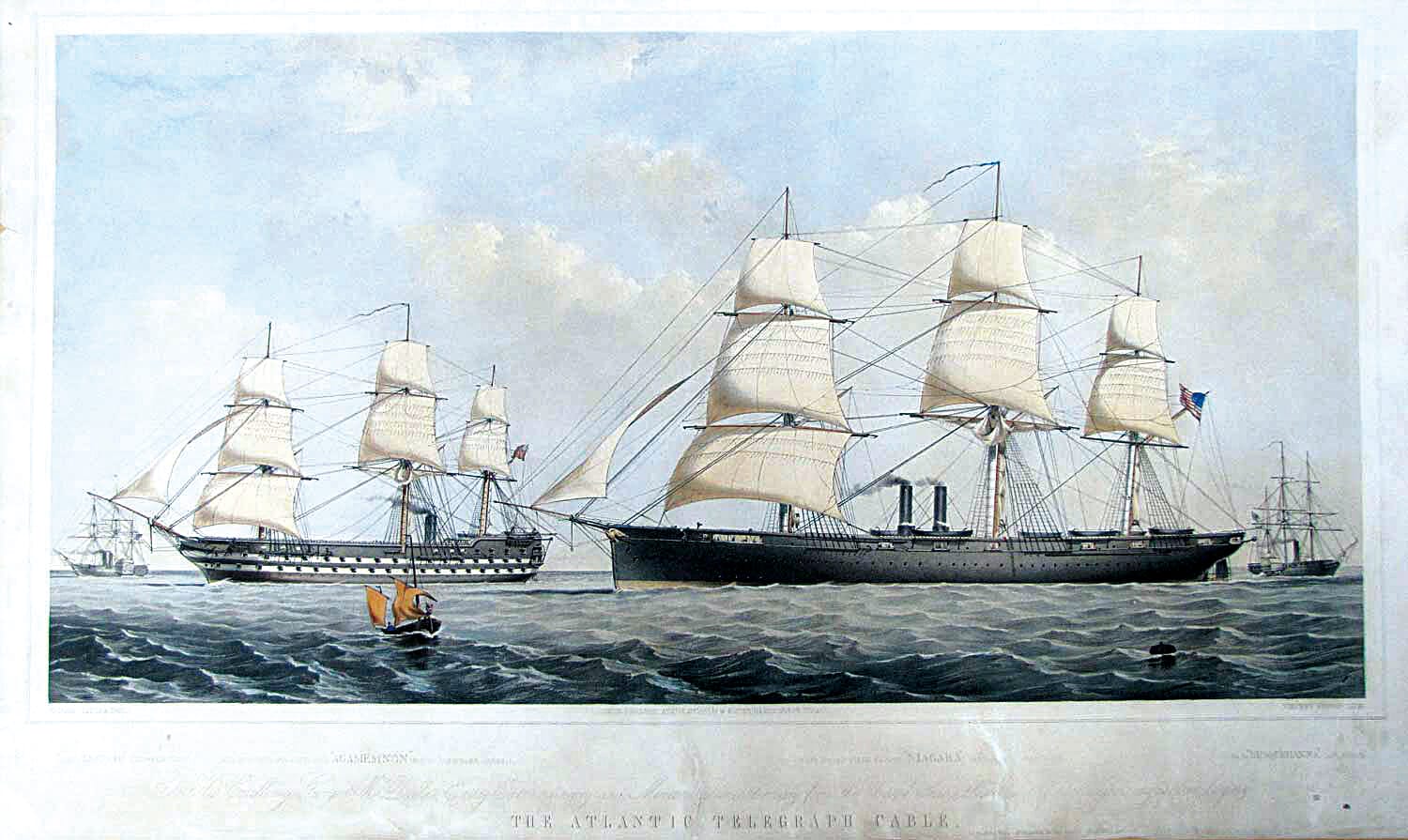
Top to bottom: Cable-laying ships Niagara and Agamemnon; the layout of the Niagara; the Atlantic Cable route; an engraving commemorating the completion of the cable

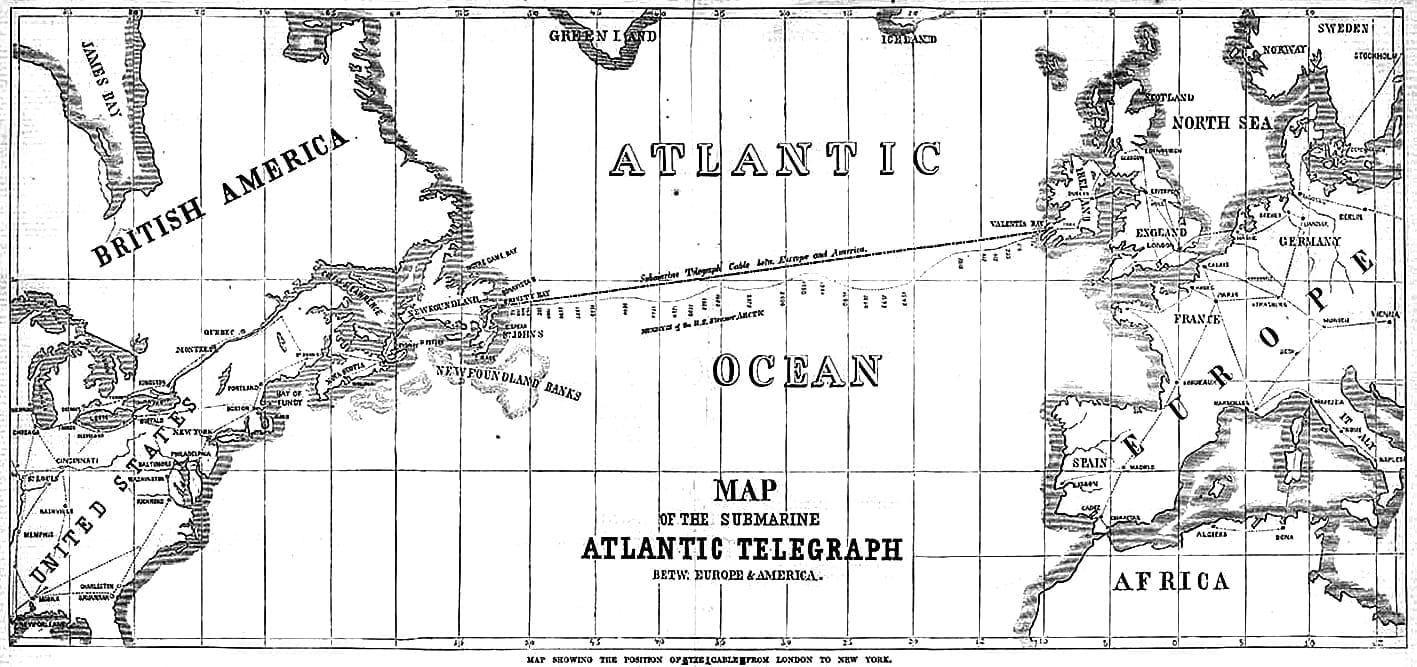
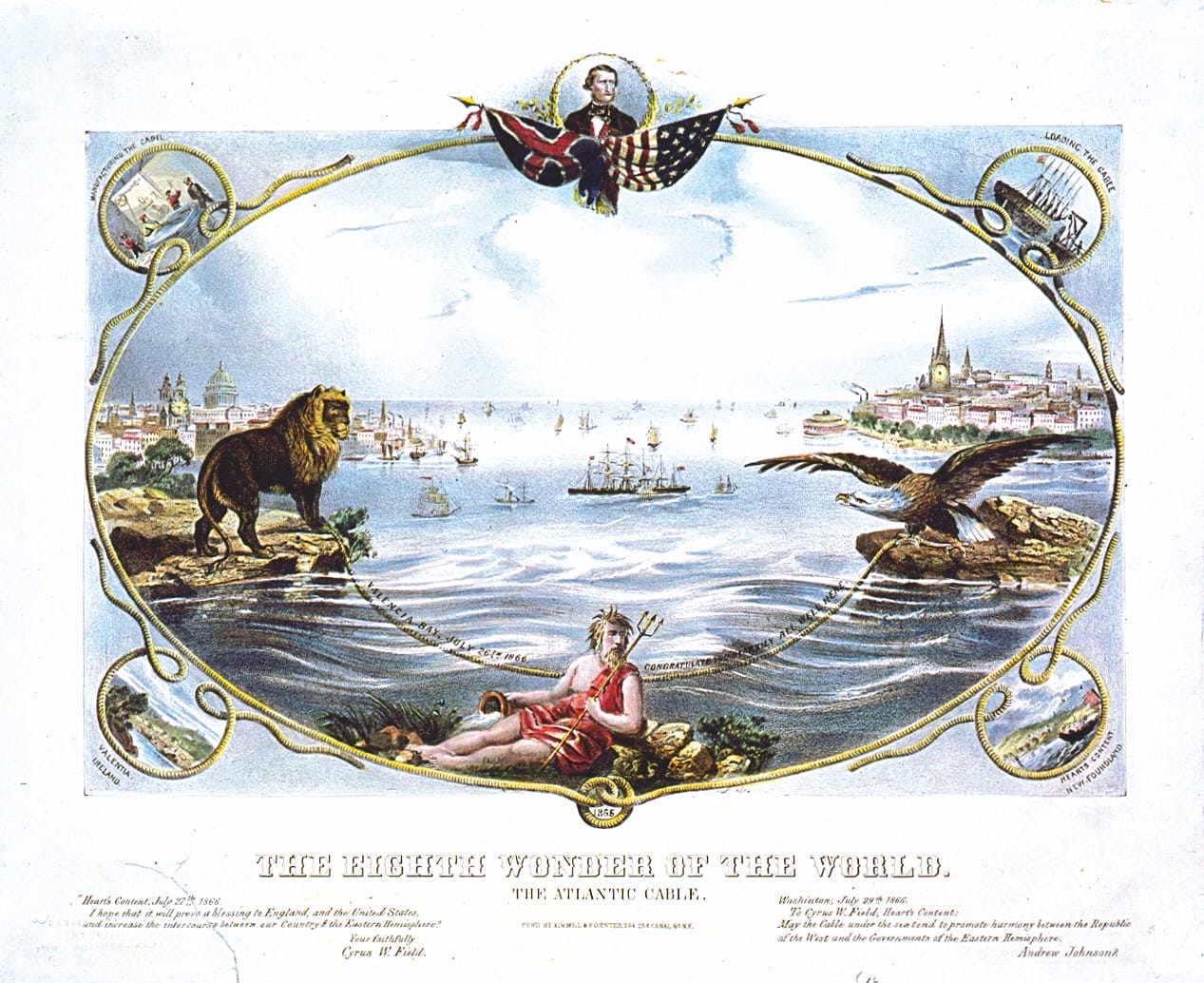
In August the ships sailed in convoy to the island of Valentia, off south-western Ireland, and a group of burly sailors dragged one end of the cable ashore through the surf into the magnificently named Foilhommerum Bay. Speeches of great portent and prayers of great sincerity were uttered. Fireworks were lit and exploded. And then, in the company of a flotilla of naval escorts, the two converted cable ships backed out into the sea, paying out cable as they went – whereupon there commenced a saga of accident, frustration, distemper and dismay that was to last well into the following year, as it proved persistently impossible to lay the cable without it breaking repeatedly and plunging forever into the depths of the sea.
The crews tried all manner of ways to get around the problem – most notably by electing to begin not at any one side of the ocean, but in the middle, the two ships meeting at a point 800 miles from each coast, splicing the cables together and then sailing away from one another towards the opposing shores. But the problems they then encountered were without number – particularly a scourge of unprecedented midsummer storms, which very nearly capsized the cable-heavy British ship. And as before, the cables kept breaking and being lost. And technical failures endlessly dogged the attempts – including a celebrated moment when engineers on one ship noticed a flaw on the cable at the very instant it was being paid out over the stern wheels, and raced frantically to repair it as it slid along the deck and before it went into the water and short-circuited. They succeeded – but the cable went dead anyway.
The directors of the company back in London became increasingly exasperated as costs mounted. Some said the project was technically impossible and wanted it abandoned. The press became cynically dismissive. Poems were written poking fun at the operation. Confidence was shaken, almost to breaking point.
But then, in the late summer of 1858, after three more failed attempts, the two ships met for one final time, spliced their cables together on 29 July, sailed away from one another, and, both inexplicably and miraculously, met no problems whatsoever. The USS Niagara sailed into Trinity Bay in Newfoundland on 4th August and the Agamemnon stood off Valentia Island, sixteen hundred miles away, just a day later. The line they had sewn together in mid-ocean was still working, and even as sailors at each end hauled the cable to the already-built cable stations, where the landlines to New York and London were already waiting to be hooked up, it was still in apparently perfect order.
There was widespread rapture. On first hearing in London the news that a link had now been joined, made, and preserved intact, The Times waxed more breathless than most of its readers must have considered appropriate: “…since the discovery of Columbus, nothing has been done in any degree comparable to the vast enlargement which has thus been given to the sphere of human activity… the Atlantic is dried up, and we become in reality as well as in wish… one country… the Atlantic Telegraph has half undone the declaration of 1776, and has gone far to make us one again, in spite of ourselves, one people.”
“A chain of two thousand miles, to bind the Old World to the New”
The first messages were passed across it, employing Samuel Morse’s now-famous code, on 16 August – with Queen Victoria first offering to President Buchanan her sincere congratulations and “fervently hoping” that the new “electric cable” would cement the ties of amity and brotherhood across the seas, and with Buchanan replying soon afterward from Washington with similar verbal folderol. Soon came the first commercial message – a report from Cunard about a non-fatal collision between two ships, the Europa and the Arabia, both of which had put into port in Canada. And then came a slew of news items. The first messages ever to be telegraphed between the two continents were either decidedly trivial, as Thoreau had fretted (“King of Prussia too ill to visit Queen Victoria”), or quite appropriately momentous (“Settlement of Chinese question: Chinese empire opens to trade; Christian religion allowed”).
But it was too good to last. Very slowly, after less than a fortnight in the water, the cable started to show signs of a mysterious suffering. Its transmissions started to fade away into gibberish, until finally they broke down altogether, the cable sending and receiving nothing. With much sadness the company directors pronounced that the cable had succumbed to some unknown submarine malady and was quite irretrievably dead.
It had lasted 15 days. It was a failure. The one new super-continent had now fissioned, had become two again. The sea had won. Such was the public disappointment and official dismay that no further cable was to be laid for another eight years. Except that eventually, those who had kept the faith proved persuasive. In 1866, Brunel’s immense new ship, the Great Eastern, was summoned from bankruptcy and idleness and pressed into service as a cable layer. She had her difficulties, too, despite eight years’ worth of technological improvements – but eventually she sailed in to the prettily named Newfoundland hamlet of Heart’s Content “having trailed behind her a chain of two thousand miles, to bind the Old World to the New”.
It was done. The cable worked almost perfectly, and Mr Field from the Berkshires, though not able because of his American-ness to be awarded like everyone else an honour by Queen Victoria, was promptly nicknamed Lord Cable by the British press. His creation proved in short order so successful and then so irreplaceably vital that within the following decade the ocean’s floors, north and south, became festooned with filigrees of cables.
A second strand was laid four weeks after the first. By 1900 there were 15, including cables to Argentina and Brazil. Communication between Europe and the Americas – between every European country and every American city, north and south – became almost instantaneous and then in time a matter of routine.
Simon Winchester’s ‘Atlantic: A Vast Ocean of a Million Stories’ (HarperPress) is out now in paperback, £9.99
Slow Journalism in your inbox, plus infographics, offers and more: sign up for the free DG newsletter. Sign me up
Thanks for signing up.





